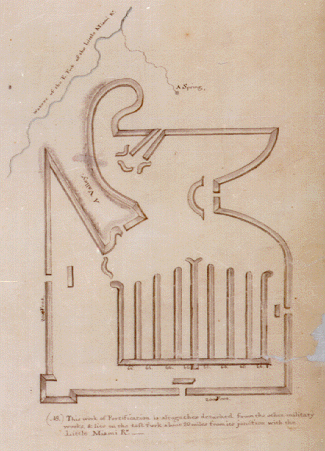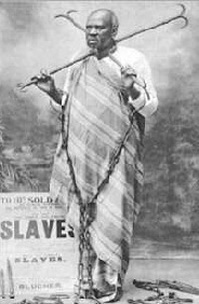And heritage itself deals with everything from land, to culture, language, religion/spiritual beliefs etc
Parse the Hebrew so that you might better understand the scripture. The Hebrew word used for "heritage" in Jeremiah 17:4 is
nachalah [נַחֲלָה], which means: "possession", "property", "inheritance", "heritage";
generally an estate, portion, or share; property that may be inherited. Hence, the passage is referring to a disconnect from the Land of Israel, and thus its fruits (groves, treasures, high places). G-d will "avenge [Himself]" of Israel; He will exile them from it for not keeping the law of the sabbatical year (Jer 17:21-24). Accordingly, the latter half of verse 4 reads: "And I will cause you to serve your enemies in the land that you do not know", a reference to their subsequent [Babylonian] exile. This is further supported by Jeremiah 17:2-3 which refers to a severance from
altars, groves, substance, treasures, high places and
borders. The surrounding verses demonstrate this disconnect to be dealing not with that of ethnic identity but with that of the land. In Parashat Ha'Azinu we are told that a righteous remnant of Israel shall always remain, lest the enemy distort and take credit [for His doing], for only He can blot the remembrance of His people from the earth.
The Hebrew word used for "discontinue" in Jeremiah 17:4 is
shamat [שָׁמַט], which is the same word used in
letting the land rest (Ex 23:11), and of
releasing creditors (Deut 15:2) in the sabbatical year. If Israel failed to keep the
Shmita, or the Sabbath rest for the land, the Lord would "impose the Shmita" and bring rest to that land. He would ensure that Israel was prevented from tilling the land and gathering the fruits of it- a practice that was enjoined on every seventh year when the land was to have its rest, or Sabbath (Ex 23:10), but this law they did not observe. When Israel was carried into the Babylonian captivity, G-d declared that they would remain in Babylon for 70 years (Jer 29:10): "For so said the LORD: For
at the completion of seventy years of Babylon I will remember you, and I will fulfill My good word toward you, to restore you to this place". This was to be one year for each
Shmita, or yearly Sabbath rest that they disregarded. Israel failed to observe the past 70
Shmitas, which meant that for 490 years prior to being carried off into captivity, they had farmed the land non-stop. These 70 years were fulfilled when Israel was released from Babylon and returned to Jerusalem in the first year of Cyrus of Persia (see II Chronicles 36:21-23, Ezra 1:1-4).
II Chronicles 36:21-23
21 to fulfil the word of the LORD by the mouth of Jeremiah,
until the land had been paid her sabbaths; for as long as she lay desolate she kept sabbath,
to fulfil threescore [sixty] and ten years.
22 And
in the first year of Cyrus, king of Persia,
at the completion of the word of the Lord in the mouth of Jeremiah, the Lord aroused the spirit of Cyrus the king of Persia, and he issued a proclamation throughout all his kingdom, and put it also in writing, saying:
23 "
So said Cyrus the king of Persia: All the kingdoms of the earth has the Lord God of the heavens delivered to me, and He commanded me to build Him a House in Jerusalem, which is in Judea.
Who among you is of all His people, may the Lord his God be with him, and he may ascend."
If Hebrews were to be scattered unto one end of the earth to another (Deuteronomy 28:64)and worship other gods, then of course they'd lose their language and culture eventually..
The Deuteronomy 28 curses failed to sever Jewish hashkafah, let alone the two-thousand year exile that followed. When the Jews gathered in Israel—the Polish Jew, the Russian Jew, the Persian Jew, the Kurdish Jew, the Bukharian Jew, the Moroccan Jew, the Turkish Jew, the Iraqi Jew, the Syrian Jew, the Yemeni Jew; Jews from all over the world—they all had the
mezuzot in the same right side, the same
Shema Yisrael inside, same
tefillin, same
tzitzit, same Sefer Torah; 99% of the customs the same. The migrations, persecutions, expulsions, pogroms; scattered few in number, every which way, and without any semblance of modern technology; still, Jews, defying the laws of history, kept one Torah, one mezuzah, one tefillin, one Shabbat, one circumcision, one matzah. Even the tefillin that were found at the Bar Kokhba revolt (132-136
CE) have the same parchment (klaf) that we use in tefillin to this day.
The scriptures express time and again that there would always be a righteous remnant of Israel, regardless of the exiles, the worshiping of other gods, the dwelling among the nations, and so forth;
for G-d feared the wrath of the enemy, and the fact that the nations would have taken credit for blotting out G-d's people from the earth, which would bring dishonor to His holy name. We see this addressed in Deuteronomy 32:26-27, which states that G-d "WOULD" make their [Israel] remembrance decease from among men, "WERE IT NOT that the enemy's wrath was heaped up, lest their adversaries distort; LEST THEY CLAIM, 'Our hand was triumphant! The LORD did none of this!'" (Deut 32:27)
Now its Hebrews calling the land they live in after an ancestor that isnt their own (Ashkenaz).. Based on what exactly? Their/your word lol.
The Jerusalem Targum, Midrashim, Chazal, Geonim, Rashi, Maimonides, medieval rabbinical literature.
In Jewish medieval exegesis,
Ashkenaz was identified with Germany,
Tsarfat with France, and
Sepharad with Spain (hence Sephardi for Mediterranean, and by extension non-Ashkenazi, Jews). The word "Gomer" in the Talmud is translated into Aramaic as
Germamia [
sic], similar phonetically to the Latin,
Germania. In tractate Yoma it says, "Gomer, that is Germamia"; elsewhere we read: "Germamia.. i.e., Germany". A fifth-century identification of Ashkenaz with Germany appears in the Midrash of Bereshyt Rabbah, where it states, "Ashkenaz, Riphath, and Togarmah are
", which means German tribes or German lands. The Jerusalem Targum identifies Ashkenaz with the "Barbari", an ethnic connotation for the Germanic peoples who invaded the Roman Empire during the time of Chazal. The ninth-century work authored by Amulo of Lyons, entitled
Contra Judaeos mentions how the Jews referred to the German Rhineland as
Ashkenaz.
In Jewish tradition, Ashkenaz and his descendants were said to dwell in the "recesses" of the north, so the Germanic territory of northern Europe was termed Eretz Ashkenaz, or land of Ashkenaz. By the end of the first millennium Jews had moved into Ashkenaz (Germany) and established communities along the Rhine River. As the communities spread, so too would the designation of Ashkenazi, expanding by the end of the fourteenth century to include all Jews of northern Europe (north of Italy and Greece). Sepharad was believed to be to the west, so the region off to the western end of the Mediterranean (Spain and Portugal) was called Sepharad, and the Jews that would later inhabit, Sephardim. The Slavic region to which the Jews migrated, namely Bohemia and Moravia, was known as Eretz Kna'an, 'Land of Canaan'; so on and so forth.
Ashkenaz is the medieval Hebrew name for Germany. Ashkenazi Jew literally means "German Jew".
Sepharad is the medieval Hebrew name for Spain. Sephardi Jew literally means "Spanish Jew".
Teman is the medieval Hebrew name for Yemen. Temani Jew literally means "Yemeni Jew".
I just like seeing how far I am in understanding this when I read stuff like this. But since we're basing land names off of Jewishness, how about Utah?
 Moab Utah
Mount Nebo
Ephraim Utah
Moab Utah
Mount Nebo
Ephraim Utah
Just to name a few

(
Jewish Virtual Library - Utah)
As early as 1826, Jewish trappers traversed the territory. In 1854, Jewish daguerreotypist and writer Solomon Nunes Carvalho traveling with Colonel John C. Fremont's mapmaking expedition yielded unparalleled images of the young Mormon community. That same year, Julius and Fannie Brooks became Utah's first Jewish family. Many Jewish entrepreneurs followed, establishing commercial shops and business ventures both large and small. Utah's early Jewish population was comprised of mostly middle-class and educated German émigrés (1857–1874) and pious Eastern European Jews (1890–1920).
(
Utah History Encyclopedia - Jewish Community)
Jews came to Utah as a result of the 1849 gold rush in California, having found their California arrival too late for them to stake claims. These early Jewish settlers were of German and Hungarian descent, and they traveled in wagon trains from the east. The earlier Germanic Jewish population was largely replaced by Jewish immigration from eastern Europe after 1880. These Russian and Polish Jews were primarily Orthodox in contrast to the more liberal German Jews.
(
Utah's Jewish History - The Earliest Utah Jews)
Jews in Utah in 2012 numbered about 5600, not much different from its population in 1899 of 5000, but Jews have been in Utah since the 1850s. The first wave of Jews came from Prussia and Germany; among the earliest comers being Isidor Morris, Nicholas S. Ransohoff, Samuel Kahn, Fred Auerbach, Louis Cohn, Aaron Greenewald, Ichel Watters, and Emanuel Kahn.




 Again, people being scattered to the ends of the earth will cause them to lose their land, culture, language etc..When you add in them worshiping the gods of the nations they were scatterd to, fathers and mothers being split from their children, wives and husbands being split all at the same time, it only adds to the probability. These are things Deuteronomy 28 says would happen right? Nothing you're saying changes that.
Again, people being scattered to the ends of the earth will cause them to lose their land, culture, language etc..When you add in them worshiping the gods of the nations they were scatterd to, fathers and mothers being split from their children, wives and husbands being split all at the same time, it only adds to the probability. These are things Deuteronomy 28 says would happen right? Nothing you're saying changes that. 











